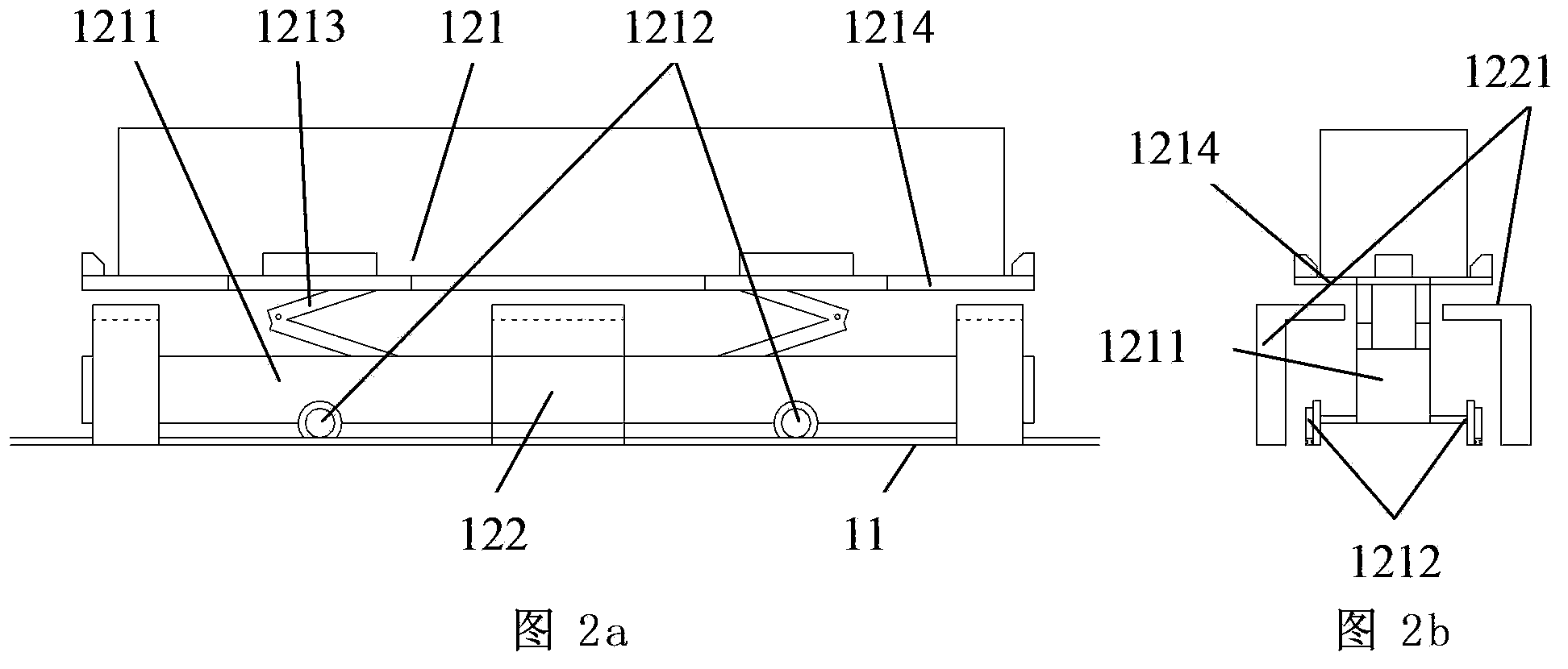Automated container wharf handling system and handling method thereof
A loading and unloading system and container technology, applied in the directions of loading/unloading, storage device, transportation and packaging, etc., can solve the problems of long time between re-entry, waste of resources and time, and low overall efficiency of collection and distribution.
- Summary
- Abstract
- Description
- Claims
- Application Information
AI Technical Summary
Problems solved by technology
Method used
Image
Examples
Embodiment Construction
[0095] The automatic container terminal loading and unloading system and its loading and unloading method of the present invention will be further described below in conjunction with the accompanying drawings and specific embodiments.
[0096] Such as figure 1 , Figure 2a , Figure 2b , Figure 3a , Figure 3b Shown, embodiment one
[0097] The automated container terminal loading and unloading system of the present invention includes quay crane 20, straddle carrier 30, yard crane 40, and shuttle truck system. line direction; the straddle carrier 30 is used for the horizontal transport of containers from the shore operation area to the front of the yard, and realizes the 90° reversing of the containers loaded and unloaded;
[0098] The yard area of the wharf is divided into a front yard and a rear yard along the depth direction of the wharf. The front yard is equipped with a yard crane 40, and the running track of the yard crane 40 is perpendicular to the direction of ...
PUM
 Login to View More
Login to View More Abstract
Description
Claims
Application Information
 Login to View More
Login to View More - R&D
- Intellectual Property
- Life Sciences
- Materials
- Tech Scout
- Unparalleled Data Quality
- Higher Quality Content
- 60% Fewer Hallucinations
Browse by: Latest US Patents, China's latest patents, Technical Efficacy Thesaurus, Application Domain, Technology Topic, Popular Technical Reports.
© 2025 PatSnap. All rights reserved.Legal|Privacy policy|Modern Slavery Act Transparency Statement|Sitemap|About US| Contact US: help@patsnap.com



